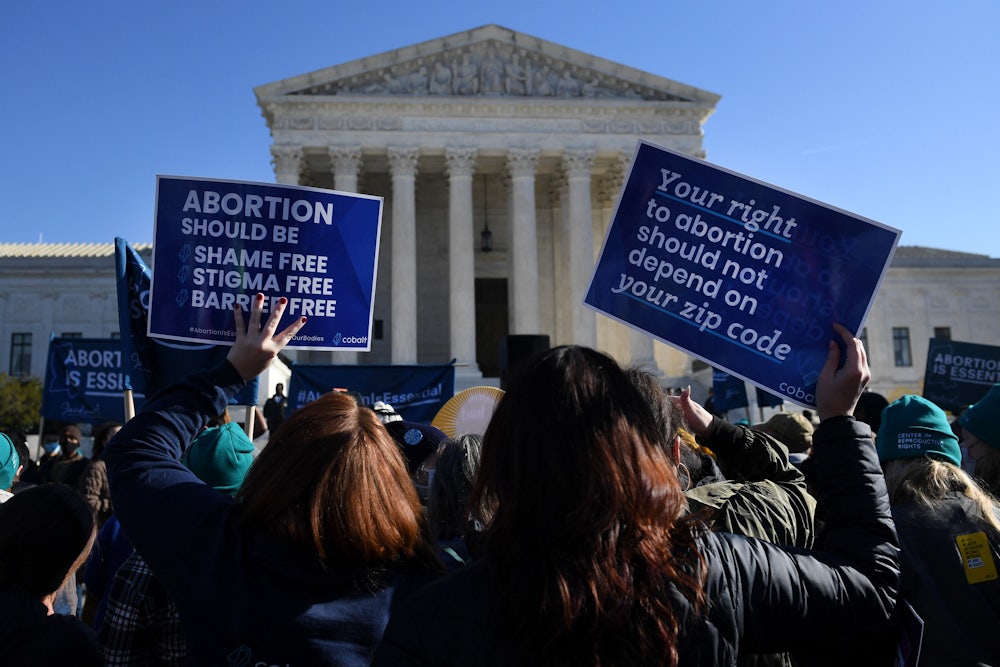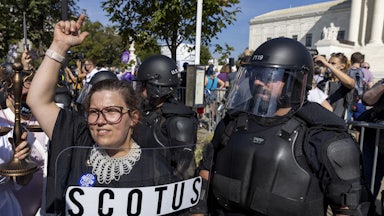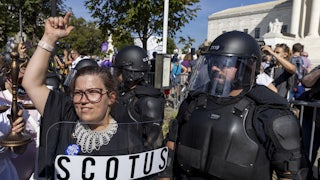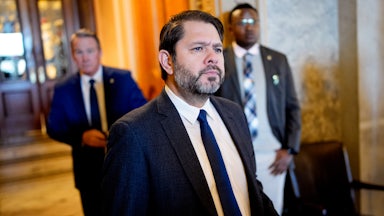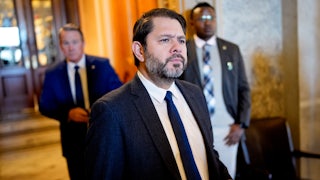Every American knows about Roe v. Wade. It’s one of a handful of Supreme Court cases, along with Brown v. Board of Education and Bush v. Gore, that can be mentioned in journalistic writing without having to describe what the case was about. Fewer Americans are probably familiar with Planned Parenthood v. Casey, the 1992 decision that rewrote Roe and set us on the course to Wednesday’s oral arguments in Dobbs v. Jackson Women’s Health Organization.
When the high court heard oral arguments in Casey, The New York Times’ Linda Greenhouse wrote that support among the justices for Roe v. Wade had “dwindled to the vanishing point.” Multiple states had passed laws and restrictions that all but defied the 1973 ruling. Just two years earlier, in Webster v. Reproductive Health Services, the court declined to overturn Roe in that case but left open the door that it would do so later.
But the court did not strike down Roe in 1992. Instead, a troika of justices carved out a new undue-burden standard to replace Roe’s troubled trimester framework. “I do not underestimate the significance of today’s joint opinion,” Harry Blackmun, the author of Roe, wrote in a concurring opinion in Casey. “Yet I remain steadfast in my belief that the right to reproductive choice is entitled to the full protection afforded by this Court before Webster. And I fear for the darkness as four Justices anxiously await the single vote necessary to extinguish the light.”
On Wednesday, that single vote appeared to be present. Five justices effectively signaled in oral arguments in Dobbs v. Jackson Women’s Health Organization that they would be willing to overturn Roe and Casey, the two legal pillars of modern abortion-rights cases. Chief Justice John Roberts sounded out the possibility of a narrower ruling that focused on whether states could restrict pre-viability abortions. But there appeared to be little appetite among the other five conservative justices to stop at half-measures.
And why should they? The court’s conservative bloc, after all, is the product of a deliberate and methodical political strategy to place an anti-Roe majority on the Supreme Court. Former President Donald Trump famously pledged to nominate justices for the high court who would overturn Roe v. Wade “automatically.” And with six seats in their control, there is little reason among conservatives to believe the court will shift toward the center—let alone the left—any time in the next 15 to 20 years.
Reading the writing on the wall, the court’s three liberals focused largely on the institutional damage to the court itself that would come with overturning Roe. Justice Stephen Breyer, who spent the summer defending the court from claims of partisanship and politicization, went on multiple soliloquies about respect for precedent and the damage that overturning Roe would do. Justice Sonia Sotomayor spoke more bluntly. “Will this institution survive the stench that this creates in the public perception that the Constitution and its reading are just political acts?” she asked.
Dobbs is nominally about a Mississippi law that bans abortions in almost all circumstances after 15 weeks of gestation. That falls well before the threshold for fetal viability, the point at which previous Supreme Court rulings give the state more power to regulate and curtail the procedure. At first, the 15-week ban posed an indirect threat to Roe rather than a mortal one. “To be clear, the questions presented in this petition do not require the court to overturn Roe or Casey,” Mississippi assured the justices when the state first asked them to take up the case in March 2020. Instead it asked the court to decide “whether all pre-viability prohibitions on elective abortions are unconstitutional.”
Six months after the petition was filed, Ruth Bader Ginsburg died. Trump and the Republican-led Senate rapidly nominated and confirmed Justice Amy Coney Barrett to replace her. In doing so, they replaced one of the court’s leading defenders of Roe with a justice who had an unusually extensive history of anti-abortion activism before joining the bench. Barrett’s confirmation also knocked Chief Justice John Roberts out of his position as the court’s median vote. From there, he had sided with the court’s liberals to strike down a Louisiana anti-abortion law in 2020 because it resembled one the court had rejected four years earlier.
When Mississippi filed its briefs earlier this year, it changed its tone. The state discarded its previous assertion about Roe and Casey, arguing that nothing in the Constitution prohibits Mississippi from enacting the law in question. “Roe and Casey are thus at odds with the straightforward, constitutionally grounded answer to the question presented,” the state claimed. “So the question becomes whether this Court should overrule those decisions. It should.”
During oral arguments on Wednesday, Roberts questioned Mississippi Solicitor General Scott Stewart on the about-face. The chief justice appeared to be trying to carve out a middle ground of sorts, one where the court might narrowly uphold the law without overturning Roe and Casey outright. Oral arguments, as I noted last week, are often a chance for the justices to signal and gauge where they and their colleagues stand in a particular case. Rarely was this dynamic more obvious than on Wednesday when Roberts struggled to find an appetite among his colleagues for his position.
The most important number at the Supreme Court is five. Barrett questioned the parties about safe-haven laws, which generally allow women to relinquish their parental authority over a newborn child without facing criminal prosecution for child abandonment. Those laws, she noted, did not exist when the court decided Roe in 1973. Part of the reasoning in Roe and Casey is that abortion allows women to participate equally in modern society by giving them the ability to control when they become a parent. “It doesn’t seem to me to follow that pregnancy and then parenthood are all part of the same burden,” Barrett said. That reasoning would factor into whether Roe’s logic has been eclipsed by later factual developments, a point often made by anti-abortion advocates when calling for it to be overturned.
Justice Brett Kavanaugh, the court’s de facto median justice at the moment, focused on what the constitutional state of play would look like if Roe and Casey were overturned. He questioned Stewart on whether he was arguing that the Constitution was “neither pro-life nor pro-choice on the question of abortion but leaves the issue for the people of the states or perhaps Congress to resolve in the democratic process,” which Stewart agreed was an accurate summary of his stance. That may be disappointing to some anti-abortion activists who believe that the Fourteenth Amendment protects fetal personhood. At the same time, it suggests that Kavanaugh is thinking about how to frame a ruling that strikes down Roe and Casey in more palatable terms for the American public.
Nearly three decades ago, Justice Clarence Thomas joined a dissent in Casey that argued outright that Roe should be overturned, and his views have not publicly changed since then. Justice Samuel Alito questioned the providers’ lawyer at length about the historical and traditional basis for a constitutional right to abortion, leaving the impression that he thought there was none and that Roe should be overturned accordingly. Justice Neil Gorsuch asked the fewest questions of any of the conservative justices, but they mainly revolved around whether the other lawyers agreed with Mississippi that Casey’s undue-burden standard had proven “difficult to administer.” If those questions reflect Gorsuch’s own views of Casey, then he would be unlikely to take part in another Casey-like effort to save Roe this time.
Casey proved to be a galvanizing defeat for conservative legal activists who had spent more than a decade building toward that moment. Abortion isn’t the only issue that brought the conservative legal movement together, of course, but it was perhaps the most potent of them. It also proved to be one of the most resonant issues among the Republican Party’s conservative Christian base. That movement succeeded beyond its wildest dreams during the Trump administration in remaking the courts in its own image. And by the time the court finishes its term next June, it will have achieved the victory it thought it should have won 28 years ago.
